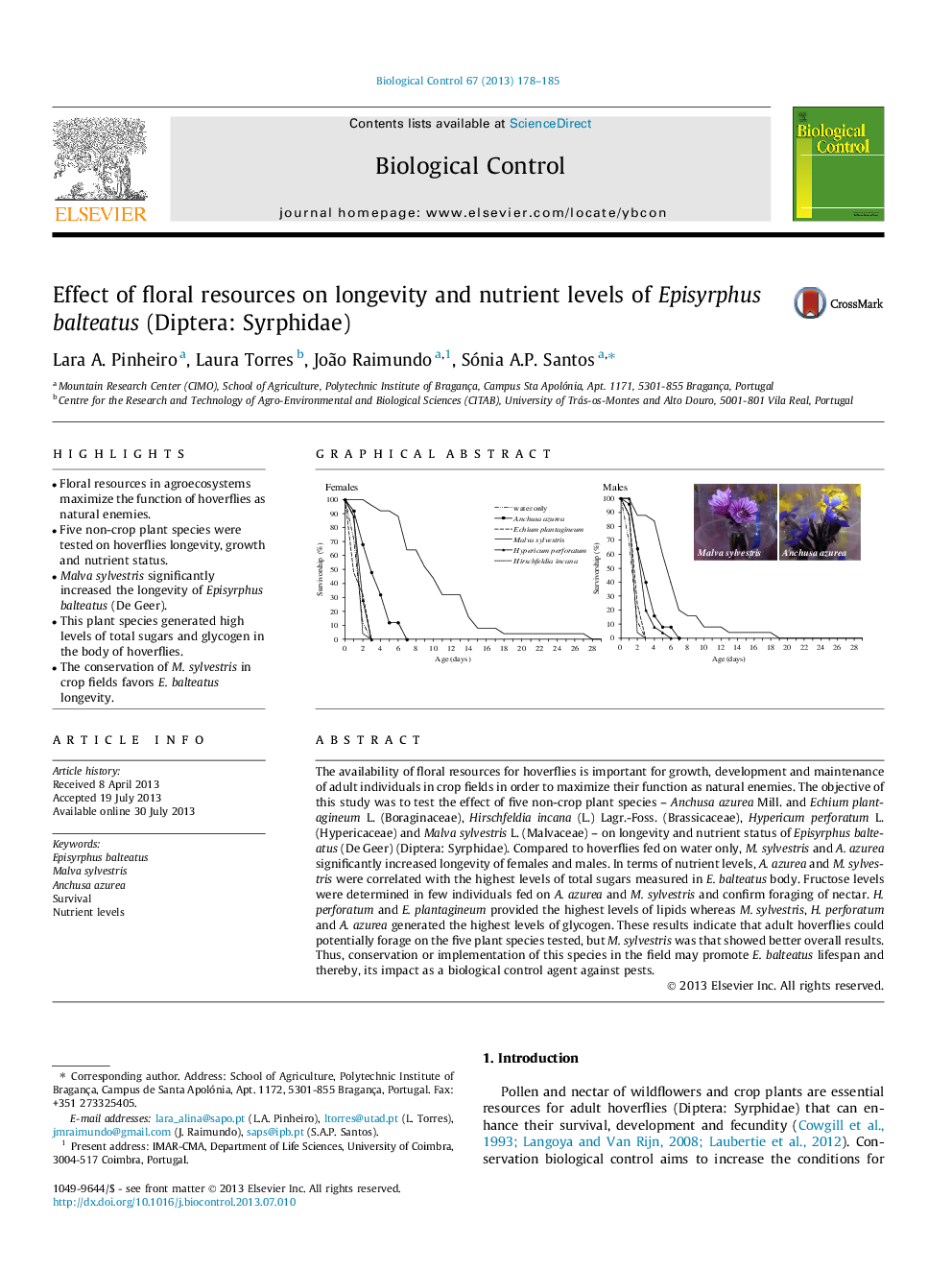| کد مقاله | کد نشریه | سال انتشار | مقاله انگلیسی | نسخه تمام متن |
|---|---|---|---|---|
| 4504049 | 1321054 | 2013 | 8 صفحه PDF | دانلود رایگان |

• Floral resources in agroecosystems maximize the function of hoverflies as natural enemies.
• Five non-crop plant species were tested on hoverflies longevity, growth and nutrient status.
• Malva sylvestris significantly increased the longevity of Episyrphus balteatus (De Geer).
• This plant species generated high levels of total sugars and glycogen in the body of hoverflies.
• The conservation of M. sylvestris in crop fields favors E. balteatus longevity.
The availability of floral resources for hoverflies is important for growth, development and maintenance of adult individuals in crop fields in order to maximize their function as natural enemies. The objective of this study was to test the effect of five non-crop plant species – Anchusa azurea Mill. and Echium plantagineum L. (Boraginaceae), Hirschfeldia incana (L.) Lagr.-Foss. (Brassicaceae), Hypericum perforatum L. (Hypericaceae) and Malva sylvestris L. (Malvaceae) – on longevity and nutrient status of Episyrphus balteatus (De Geer) (Diptera: Syrphidae). Compared to hoverflies fed on water only, M. sylvestris and A. azurea significantly increased longevity of females and males. In terms of nutrient levels, A. azurea and M. sylvestris were correlated with the highest levels of total sugars measured in E. balteatus body. Fructose levels were determined in few individuals fed on A. azurea and M. sylvestris and confirm foraging of nectar. H. perforatum and E. plantagineum provided the highest levels of lipids whereas M. sylvestris, H. perforatum and A. azurea generated the highest levels of glycogen. These results indicate that adult hoverflies could potentially forage on the five plant species tested, but M. sylvestris was that showed better overall results. Thus, conservation or implementation of this species in the field may promote E. balteatus lifespan and thereby, its impact as a biological control agent against pests.
Figure optionsDownload as PowerPoint slide
Journal: Biological Control - Volume 67, Issue 2, November 2013, Pages 178–185